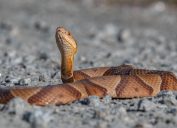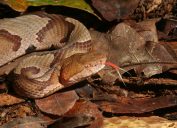Copperhead Breeding Season Prompts Urgent New Warning About "Close Encounters"
Officials are reminding people to be cautious in certain spaces to avoid this venomous snake.

Copperhead snake encounters are not something most of us worry about, but you ignore these snakes at your own peril. Back in July, a 14-year-old boy was bitten by a copperhead while he playing in the garage at his home in North Carolina. And just last month, a mom in Tennessee sounded the alarm for other parents after finding a copperhead in her child's stroller. Now, officials are issuing a new warning amid copperhead breeding season. Read on to learn how you can avoid "close encounters" with these venomous snakes.
RELATED: Rattlesnake Attack Has Trauma Doctor Issuing a New Warning.
It's currently copperhead breeding season.
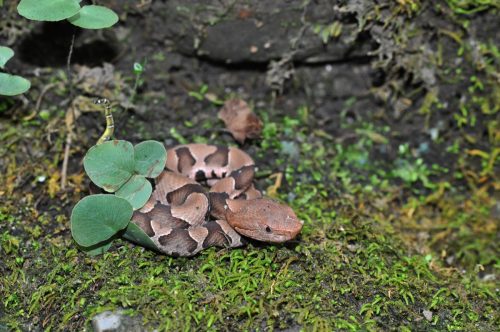
Copperheads are one of the most commonly seen snakes in the U.S., making their home from Massachusetts to Nebraska, according to the Smithsonian's National Zoo & Conservation Biology Institute. But you may be even more likely to stumble on one right now during its fall breeding season, which occurs between August and October.
In fact, officials in Montgomery County, Maryland, just issued a new alert after someone shared a photo on social media of a copperhead snake at the Lake Needwood trail in Rock Creek Regional Park.
"Look out for snakes, including copperheads at this time of year! This is their breeding season," Montgomery Parks posted Oct. 9 on their official X account.
RELATED: 14-Year-Old Bitten by Copperhead in His Garage—Here's How It Got There.
Officials are urging people to be cautious in certain spaces.

According to Montgomery Parks, copperheads tend to take advantage of "heat-gathering hard surfaces" during their breeding season in order to regulate their body temperature. As a result, people may be more likely to find themselves near one of these snakes in the fall.
"Park users should be cautious, particularly with the potential for encounters with Eastern Copperheads that may be crossing or basking on trails," officials wrote in another Oct. 9 X post.
RELATED: 3 Things Leading Copperhead Snakes to Your Home, Experts Say.
They are also warning about "close encounters."
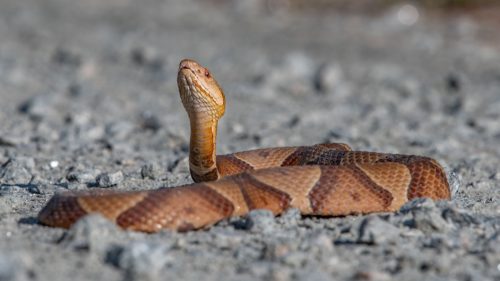
But it's not just the time of year and preferred resting spots that are likely to cause more run-ins with copperheads this season. These snakes "are not aggressive by nature and prefer to remain undetected, relying on cryptic camouflage for protection," according to Montgomery Parks officials. Unfortunately, that is one of the main factors contributing to unwanted interactions with copperheads.
"This skillful camouflage can also be the cause of close encounters with people and pets," they wrote in their X posts. "So, please, always look carefully where you step."
Copperhead snake bites can be extremely painful.
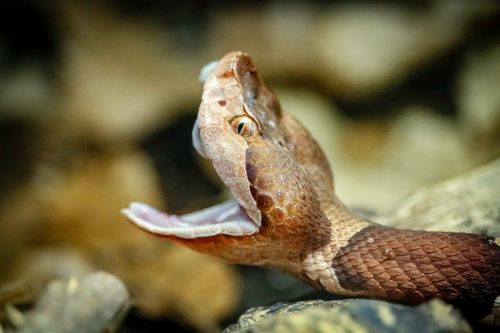
Copperhead snakes are venomous, and they're responsible for the most venomous snakes bites every year in the U.S., according to National Geographic. Thankfully, these snake bites are rarely fatal with proper care.
"Most can be treated by medical room visits, but copperheads are considered to be the most dangerous snake in many states because they're the most likely to bite or be found near human dwellings," the experts at National Geographic explain.
Despite not usually being fatal, copperhead bites are typically "extremely painful," Bill Crisp, a local reptile conservationist and educator with nonprofit K2C Wildlife Encounters, recently told Prince William Times.
"Symptoms include swelling, redness in the area, nausea and vomiting and require a trip to the hospital," he said.
RELATED: For more up-to-date information, sign up for our daily newsletter.
